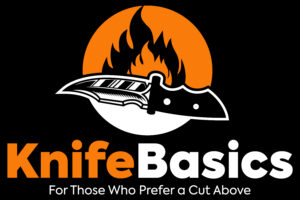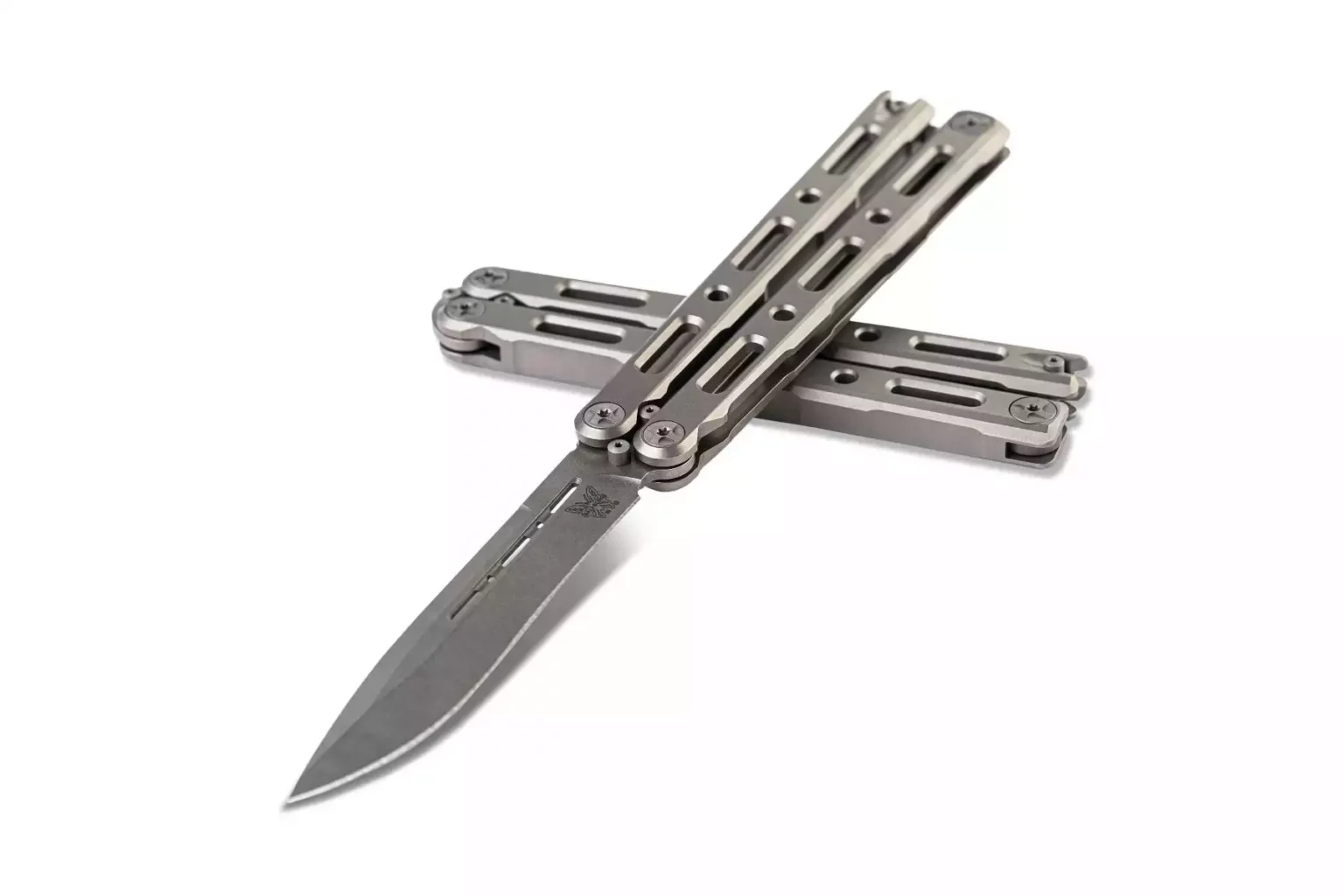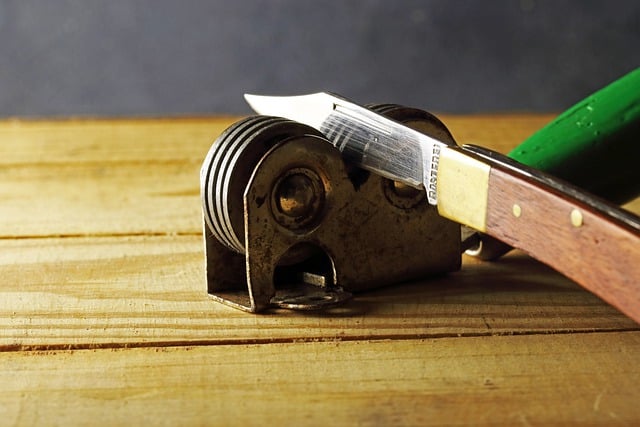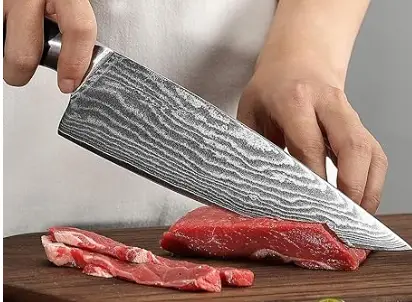Looking for the perfect compact yet powerful knife? Look no further! In this article, we delve into the differences between butterfly knives and switchblades, two popular choices among knife enthusiasts.
Butterfly knives, also known as balisongs, are known for their unique flipping action. With handles that rotate around the blade, they offer a mesmerizing and impressive display of skill. On the other hand, switchblades, also called automatic knives, are characterized by their quick-deploying blade mechanism. With just the push of a button, the blade springs open, ready for action.
Why should you know the differences between these two types of knives? Understanding their pros and cons, legal restrictions, and intended uses will help you make an informed decision when choosing the right one for your needs. Whether you are a knife collector, a martial artist, or simply looking for a dependable tool for everyday use, this article will provide you with the information you need to make an educated choice.
So, grab your pen and paper, and let’s dive into the fascinating world of butterfly knives and switchblades!
What is a Butterfly Knife?
The Butterfly knife is also known as the Batangas or Balisong knife. The knife has a unique build, with two handles that rotate around the tang. When closed, the grooves within the handles hide the blade.
A skilled person can quickly deploy and withdraw a Butterfly knife using one hand. No wonder criminals have a special love for the knife as they can attack and retract it in the blink of an eye.
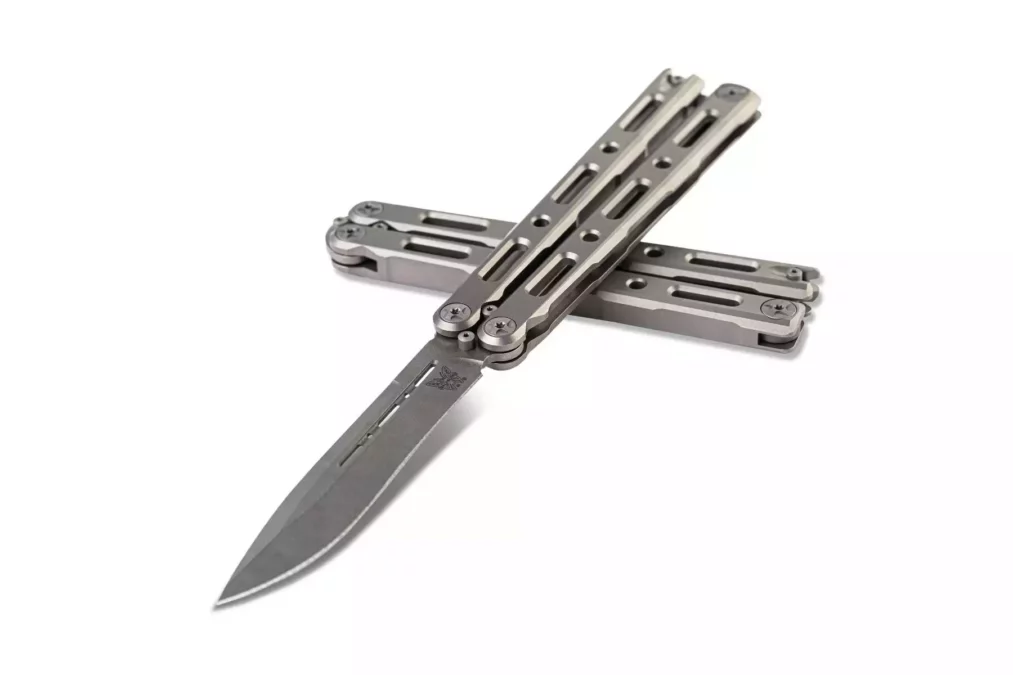
The History of the Butterfly Knife
Most people believe that these blades originated in the Philippines. Others think that it came from Europe. But the Balisong Patent came from France in 1880, though it was already in production as early as 1500BC.
Whereas the knife’s origin remains unclear, what is clear is that Balisong is a close combat knife. The blade traces usage to the Filipinos, especially those in the Tagalog region.
In the early days, the butterfly knife was popular as a combat and pocketknife. The Filipinos also used the hollow grind butterfly knives as razors.
Features of a Balisong Knife
Construction
The Butterfly knife is constructed in two ways. The channel construction and sandwich construction. For the sandwich construction, the craftsmen assemble the parts in layers. They then screw them together to complete the process. When the knife close, the blade rests between the layers.
In channel construction, artisans start by constructing the main handle. A groove is then made in the handle where the blade rests.
Number of Handles
One of the unique features of a butterfly knife is that it has two handles. One is the safe handle, and the other is the bite handle. Both handles are foldable and movable and can conceal the blade.
Concealable Blade
The Butterfly knife has a concealable blade. You can conceal the blade inside the handle by folding both handles together. When folded, it is possible to confuse the Butterfly for a small stick that fits into your pocket easily.
Safety Lock
The Butterfly knife boasts a durable and robust safety handle. This lock ensures that the handles remain folded and locked. When you deploy the knife, the handles lock and are firm so that it is easy for you to use the knife accurately.
The Trickster Knife
The Butterfly is generally referred to as the trickster’s knife. Various people use it to play different tricks. You can flip the knife interchangeably using the two handles. You will find the blunt version of the butterfly knife used for practice and training.
What is a Switchblade?
The knife features a spring that propels the blade from either side of the handle. You can withdraw the blade very fast, and thus switchblade Knife is ideal for self-defense. But it is also popular with criminals because of the very same reason.
Origin of the Switchblade Knife
The history of the switchblade knife dates back to the 18th Century. European artisans developed early flick knives using automatic folding spike bayonets. Some had wooden handles, while others featured stag handles.
Some switchblade knives from Sheffield, England, have crown markings dating back to 1840. In the 19th Century, flick knives marked “Châtellerault” were available in France. These knives were both in manual and automatic versions.
After the 1865 American civil war, the production of knives was industrialized. Producers started making folding blades at lower costs and in large numbers. Later, in 1892, George Schrade, a machinist patented the first automatic knife design.
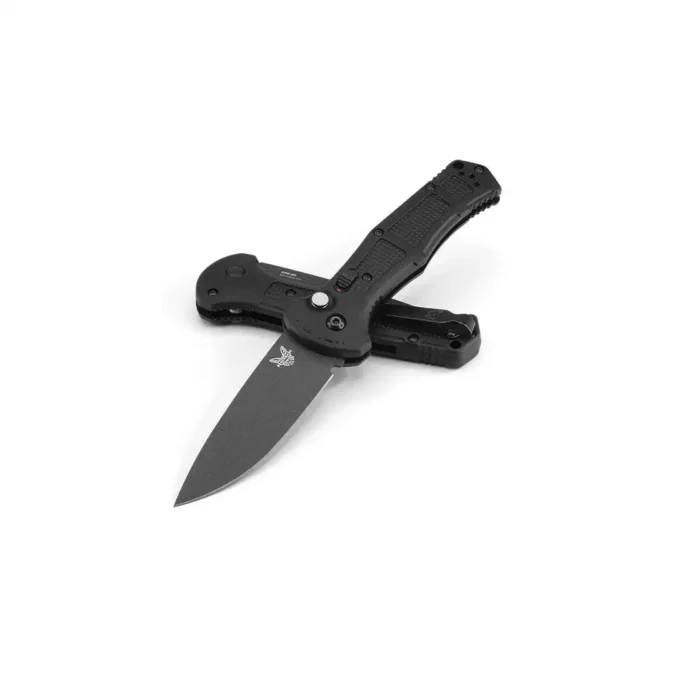
Features of a Switchblade Knife
Handles
The switchblade has one handle containing a groove for concealing the blade. You can easily open the knife with one hand. But to retrieve the blade, you need to use both hands.
Automatic Springs
The switchblade knife features a spring-loaded blade that unfolds and folds very fast. The spring uses a button lever to deploy and retrieve the blade.
Concealable Blade
A flick knife features a blade that is entirely concealable inside the groove. Due to the fast deployment of the knife, you need to be careful as you can get hurt when handling the knife.
Butterfly vs Switchblade Knife. What is the Difference?
Opening Mechanism
A switchblade is an automatic knife. To deploy the knife, you must press a button that releases the blade from the sheath. Some producers also configure the button to enable retrieving the blade with ease. But manual blade retraction is common in most blades.
To open a butterfly knife, you need to fold the knife and flip the wrist backward. This motion activates the safety lock, releasing the blade. You can deploy and retrieve the blade of a butterfly knife using one hand.
The Type of Handle
Like conventional knives, switchblades have one hollow handle. The handle can eject the blade through the press of a button. The blade deploys either through the front or back of the handle. Butterfly knives feature two handles, the bite, and the regular handle.
When handling the knife, you need to be conscious of the bite handle. As the name suggests, it can “bite” and injure you even when the blade is concealed.
Stability
These two knives are almost at par in terms of stability and balance. But the switchblades come on top.
Butterfly knives have two separate handles that do not have a finger guard and hilt. When doing accurate or severe stabbings, you also risk hurting yourself. Also, the concealed blade may wobble from time to time within the handle.
But the flick knife is not that stable, either. Using a press button to deploy the knife means that the blade is not a perfect fit in the groove. The knife may wobble from time to time, depending on its quality.
Does a Butterfly Knife Count as a Switchblade?
The Butterfly Knife and the Switchblade, which one is Safer?
The switchblade is not that safe, either. When drawing the knife, the blade opens very fast. If you are not a skilled handler, you can hurt yourself.
- BLACK BUTTERFLY KNIFE is made of 420C stainless steel (58 HRC) with reinforced screws & pins, providing a reliable training experience. Lock type - spring latch; Blade length - 3.94"; Handle length - 5.12"; Overall length - 9.05"; Weight - 4.76 OZ
- SAFE BLADE. Balisong has unsharpened blade, ensuring practice without any cuts, injuries or bruising to the hands. Our butterfly knife can't be sharpened due to its design.
- DURABLE BUILD. We use high-quality stainless steel with with reinforced screws, pins and spring latch. Our training butterfly knife is designed for optimal balance, durability, handling and reliable use through practice sessions.
- PERFECT FLIPPING ACTION. Precision-tuned pivots and a non-slip ergonomic handle deliver the perfect experience for beginners, teens, adults and experts.
- INSTRUCTION TO LOOSE / TIGHTEN YOUR BALISONG. Open the latch located on the bottom of the butterfly, hold the handle and tighten the pivot screw using a suitable screwdriver (located where the handle meets the blade base). Repeat the process for the other handle. Ensure that the handles aren't overtightened!
- Unique, stylish and beautiful design, this is an ideal gift for friends.
- Made of strong steel for lasting and sturdy use. Brand New, Durable and High Quality.
- Don't worry about rusting problem, easy to clean to keep it brand-new all the time.
- Fixed with rivets, not easy to damage. With good centroid position, providing comfortable sense of balance.
- If any failure of the tool within 6 years, we promise to offer free replacement or refund. Please email us with any questions or concerns.
- Sturdy Training Design: Stainless steel butterfly trainer knife with solid pins and copper washers for stability. A spring latch keeps the balisong trainer butterfly knife secure during practice
- Injury‑Reducing Design: The blunt edge on this fake butterfly knife trainer metal lets you perform tricks safely. A practice balisong knife that keeps realistic balance ensures safe progress without risk of cuts
- Smooth Flipping Action: A butterfly training knife with latch and pivot screw for easy setup. Each butterfly knife practice handle is smooth, burr free, and steady for controlled training
- Package and Size: Our set includes 1 balisong practice butterfly knife fidget trainer built at 8.2 inches by 0.74 inches. fidget butterfly knife suits of all skill levels, for safe practice and casual play
- Gift Ready Choice: These trainer balisong knives serve as props for costumes and safe skill training. A balisong knife trainer makes a thoughtful gift for learners wanting safe flipping practice
Conclusion
The butterfly and switchblade knives are good pocket knives for self-defense. But looking at the two knives, their features are very different. The butterfly knife has two handles and users deploy it with a flip of the handle. Without a doubt, these knives are very different than most other knives especially bread knives.
The switchblade knife has one handle. You can draw the blade by pressing a button. Before buying one, you must check if your jurisdiction permits owning the knife.
